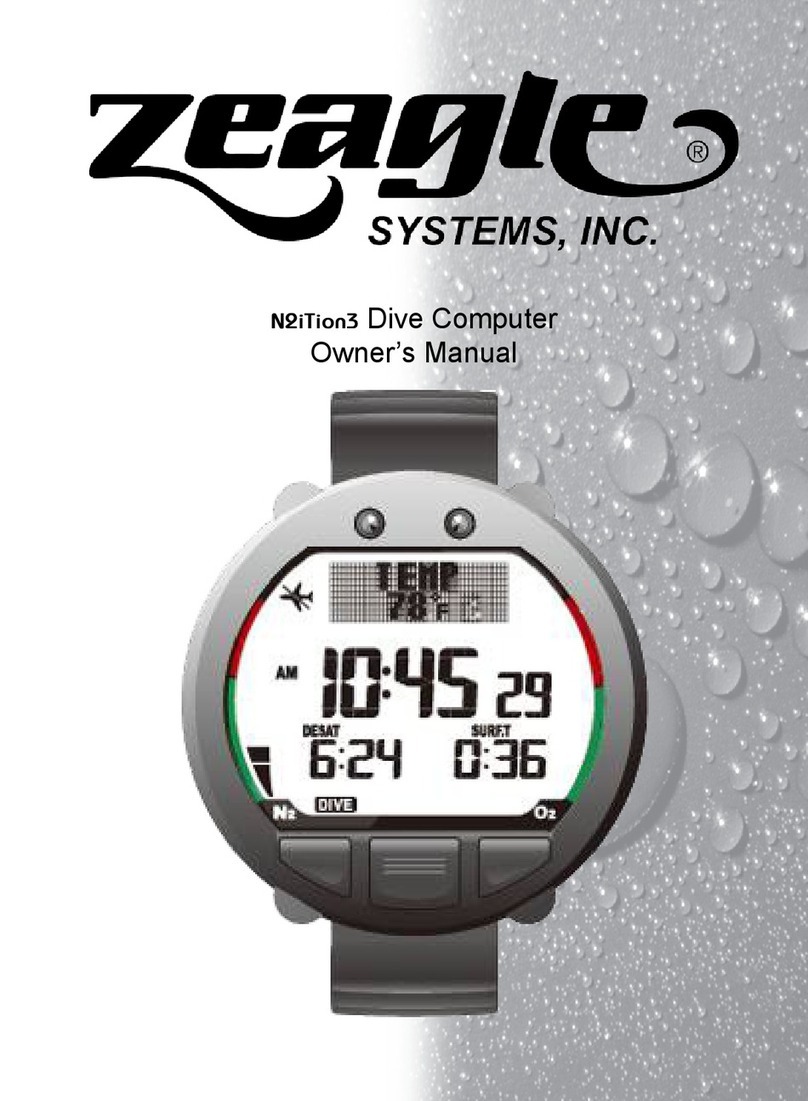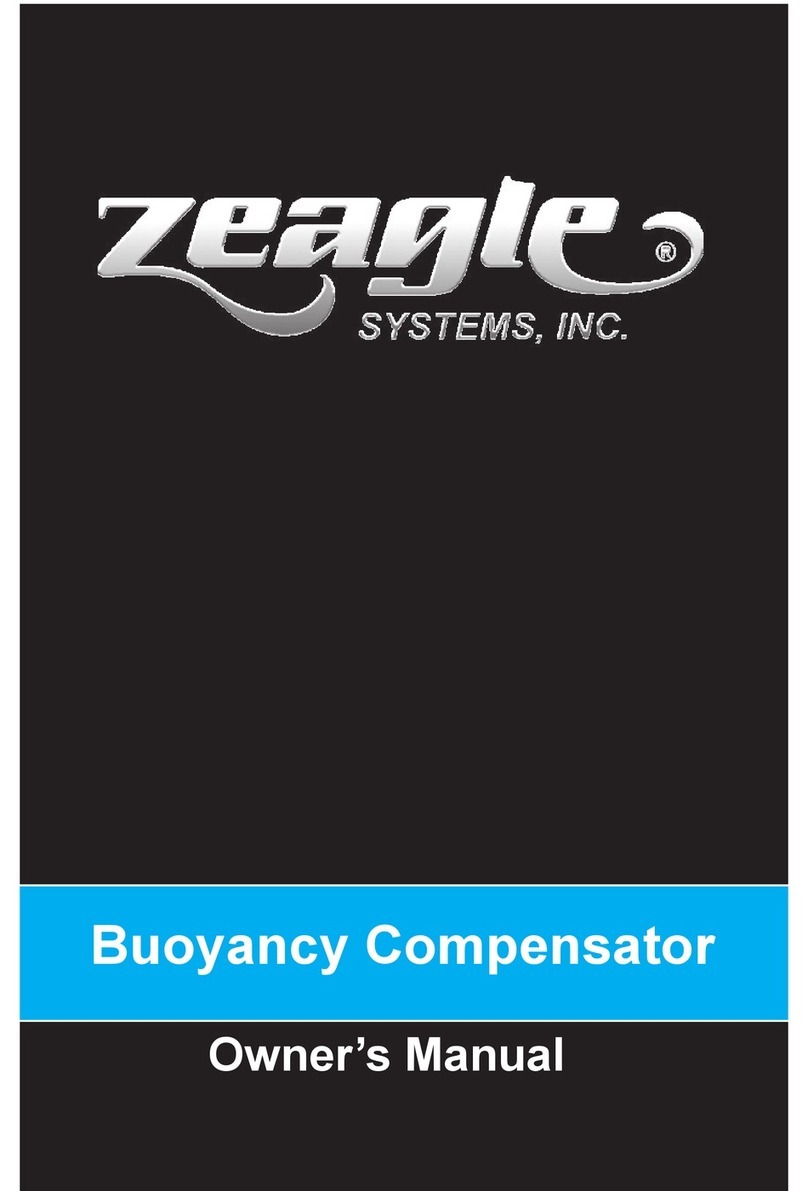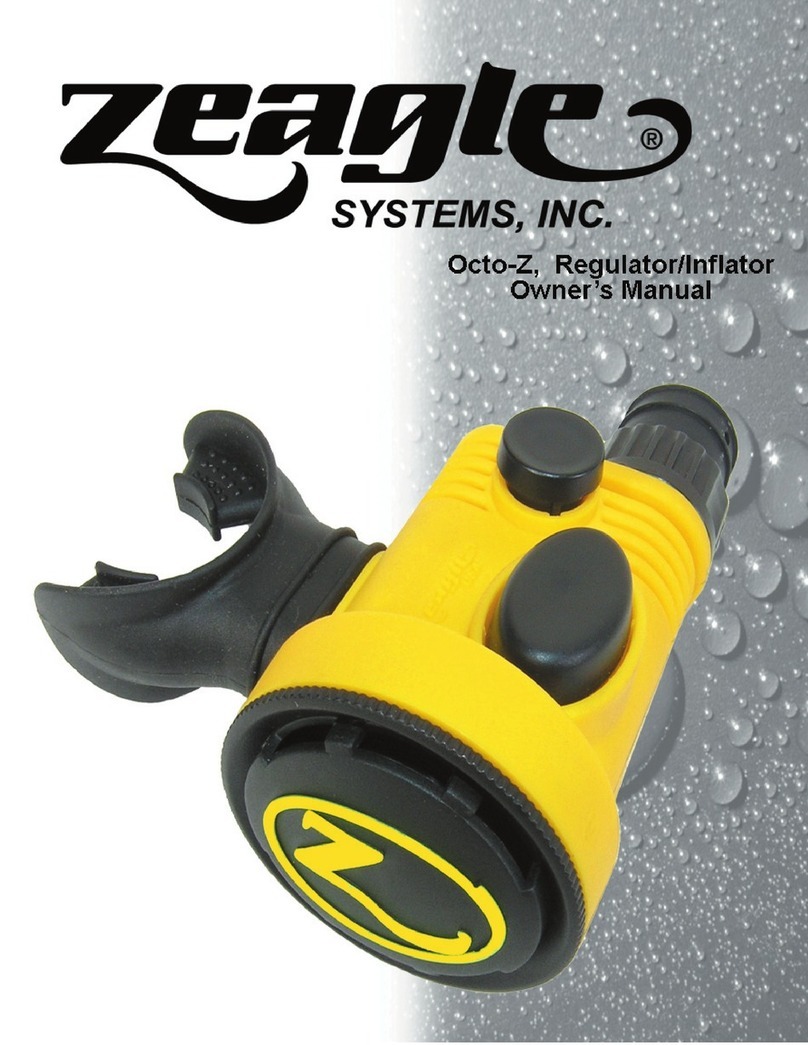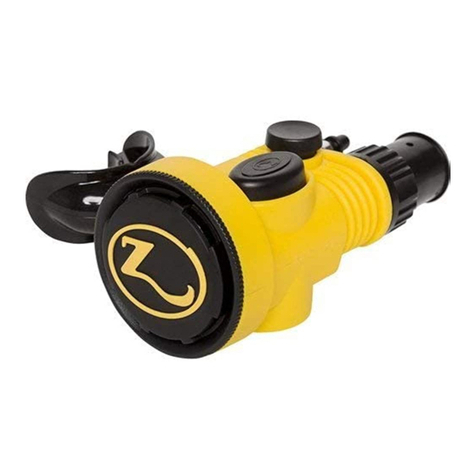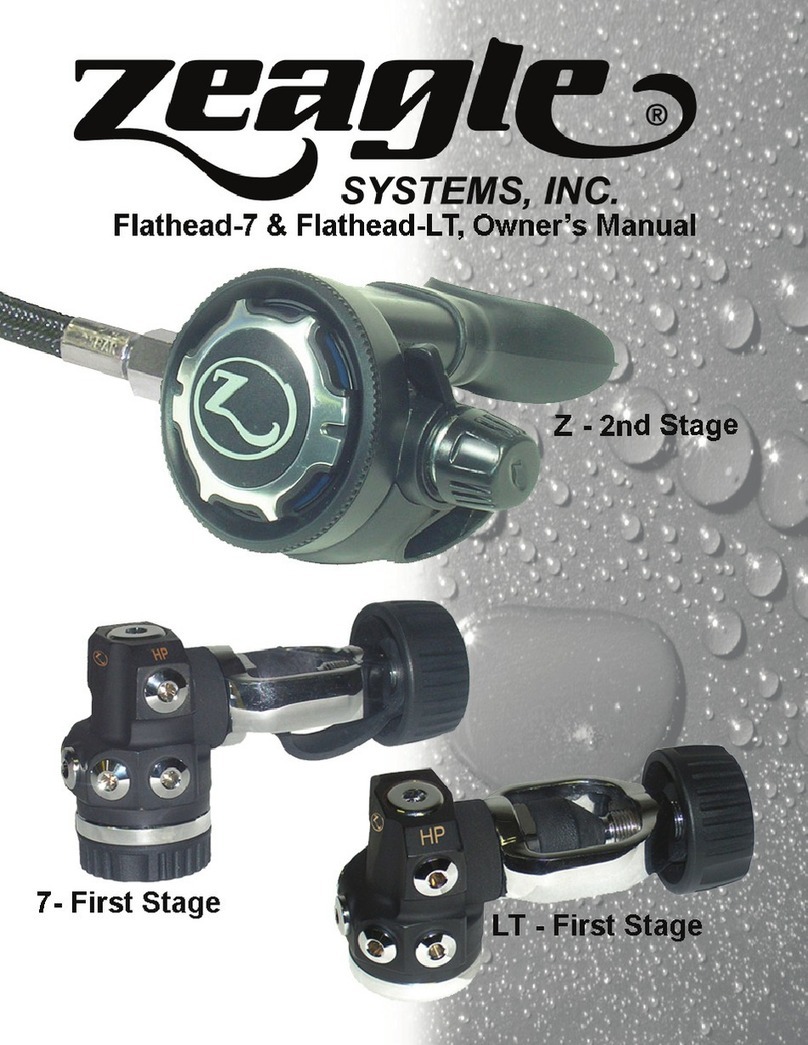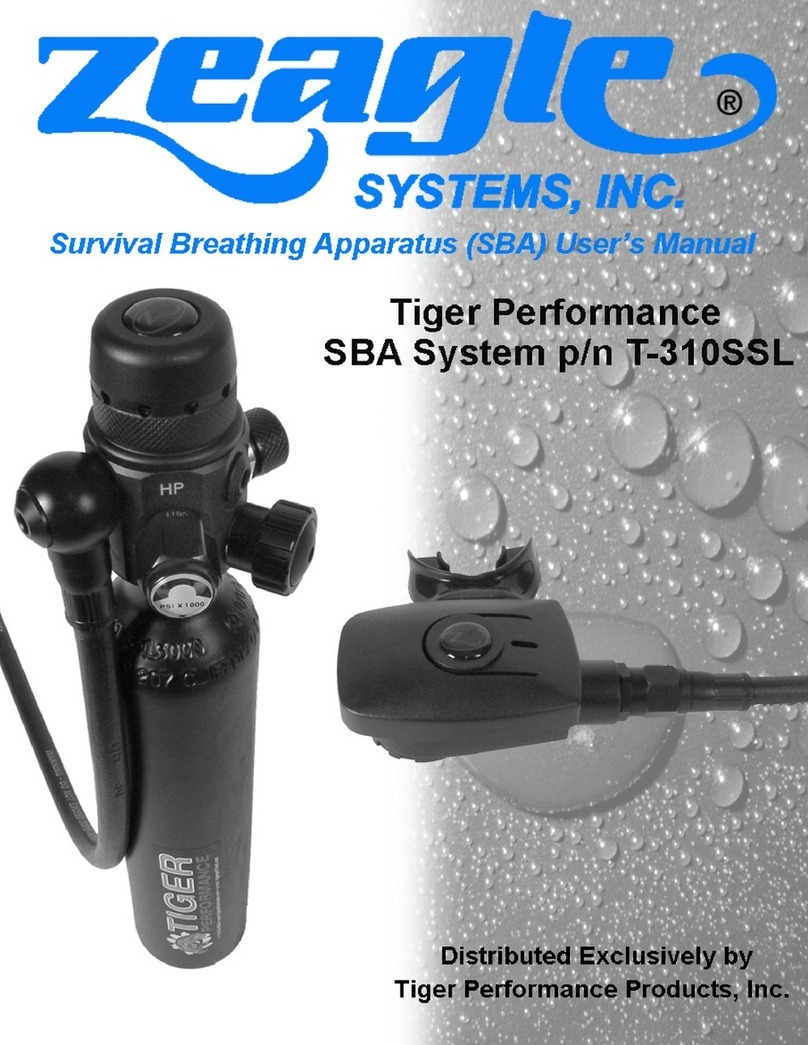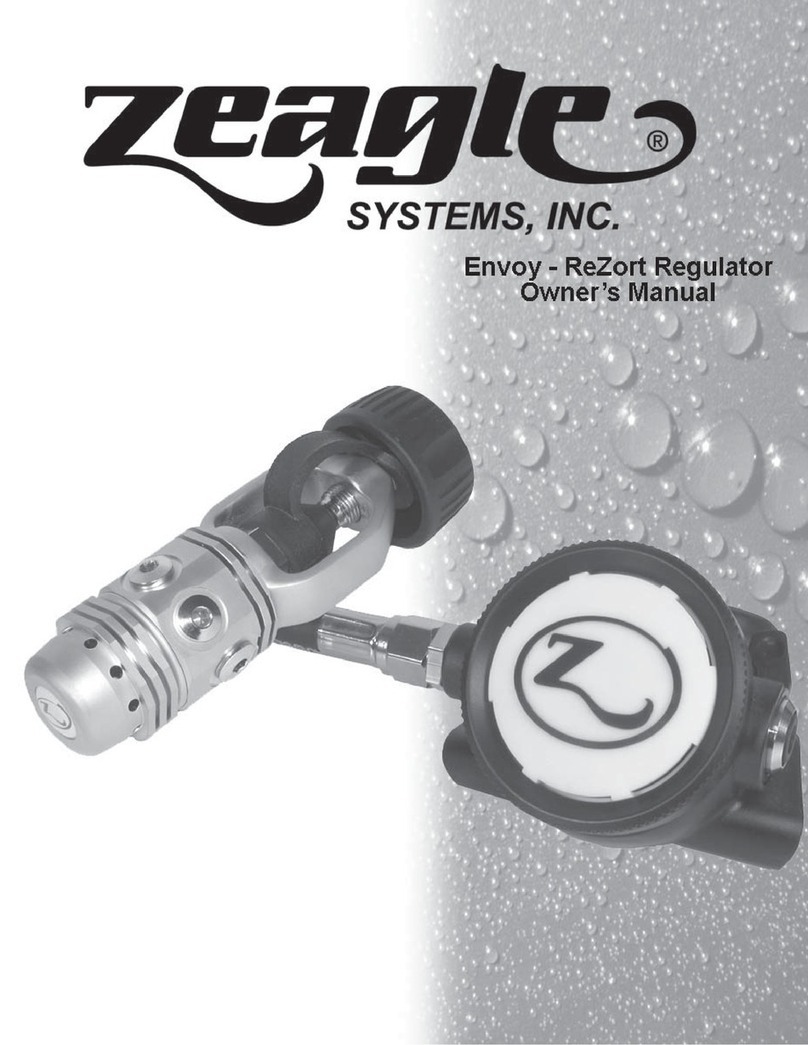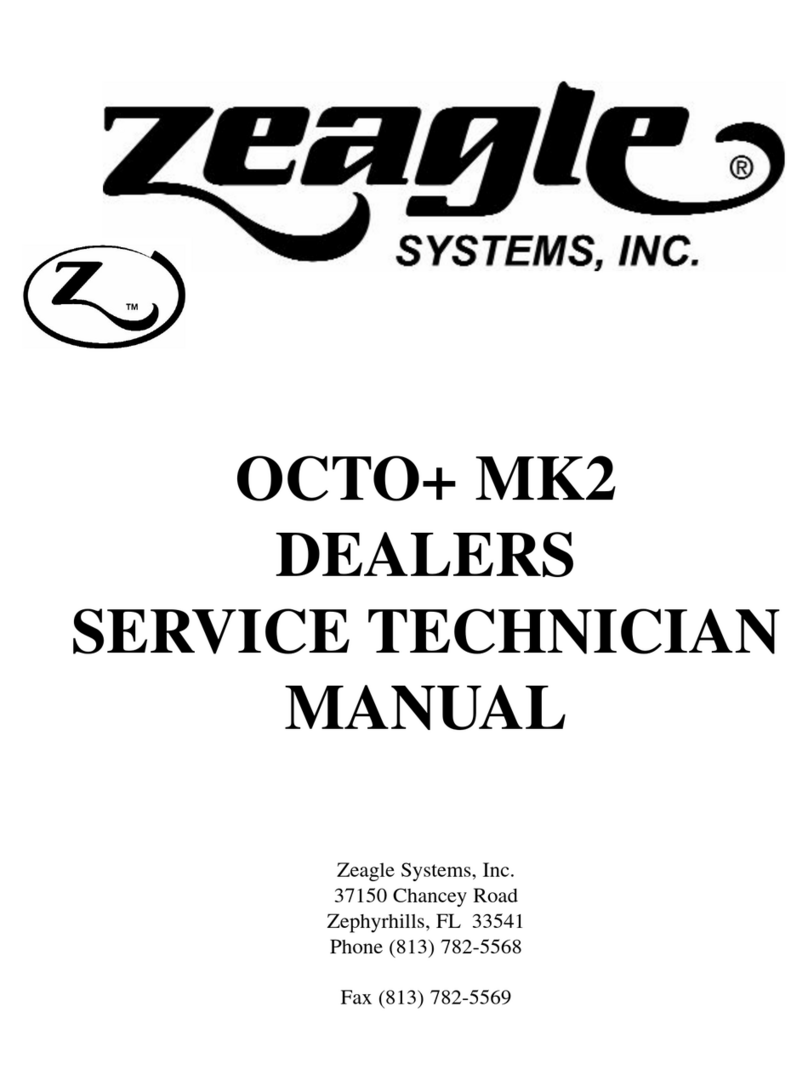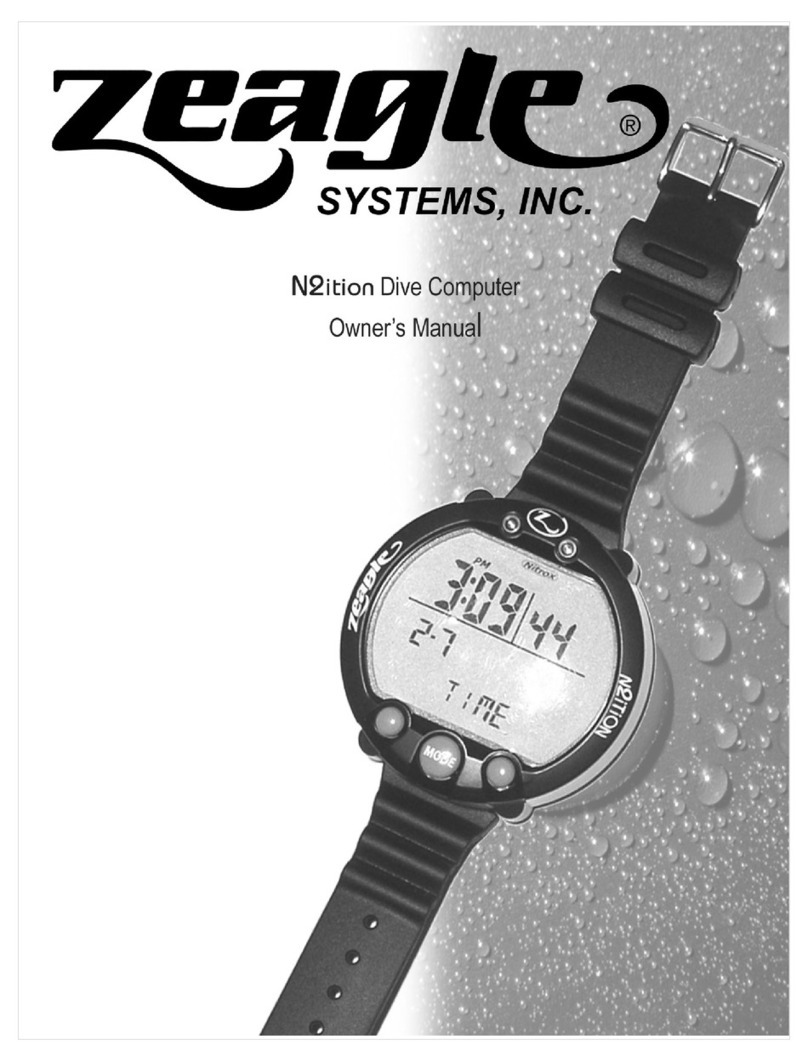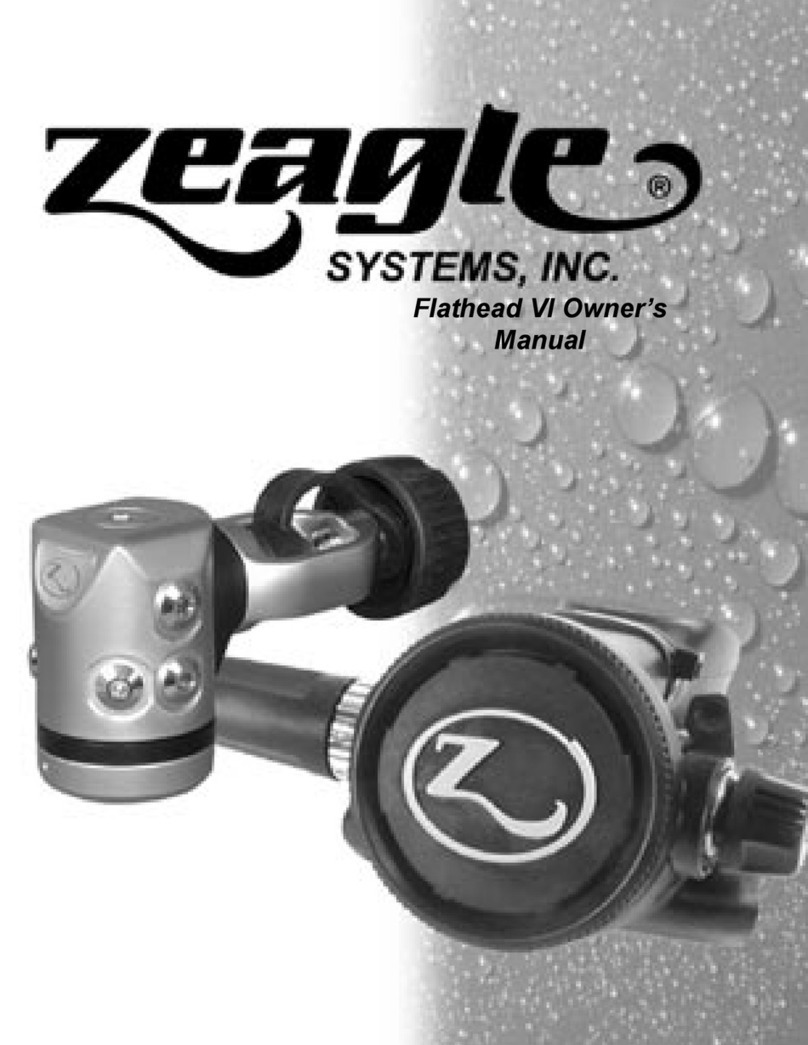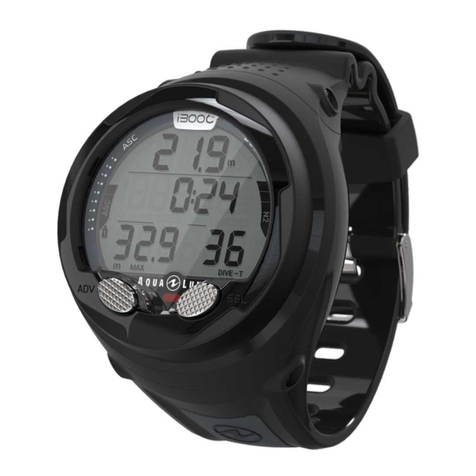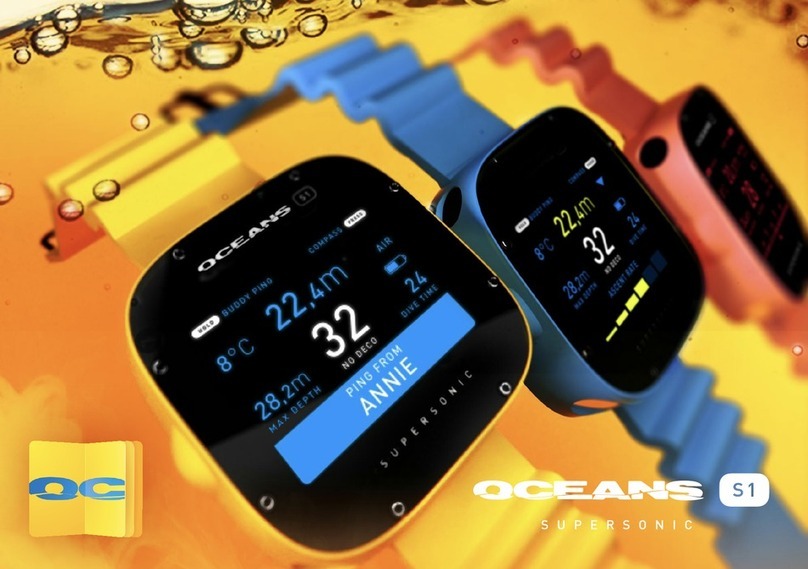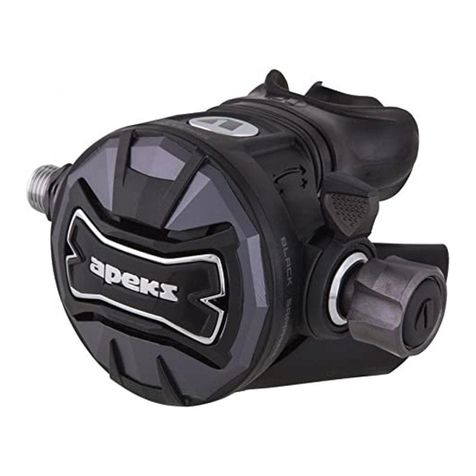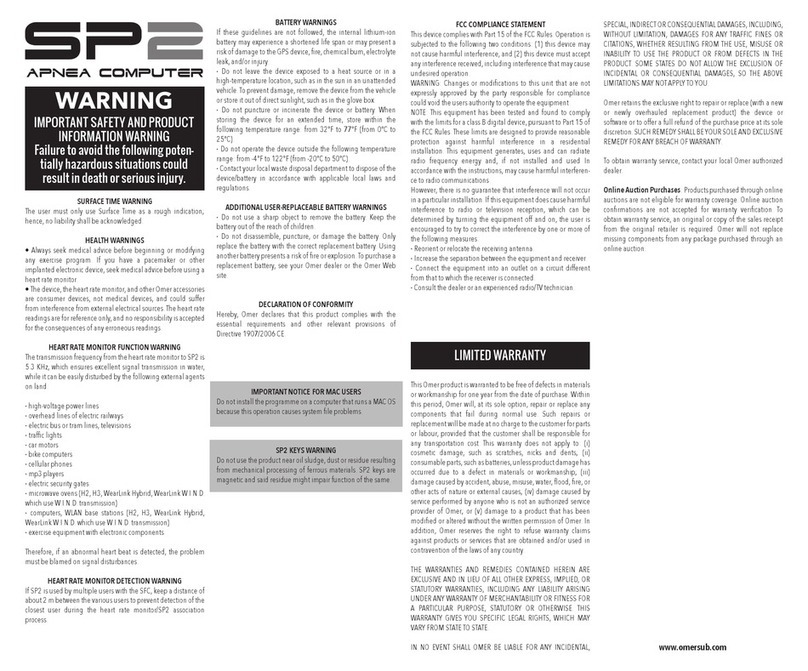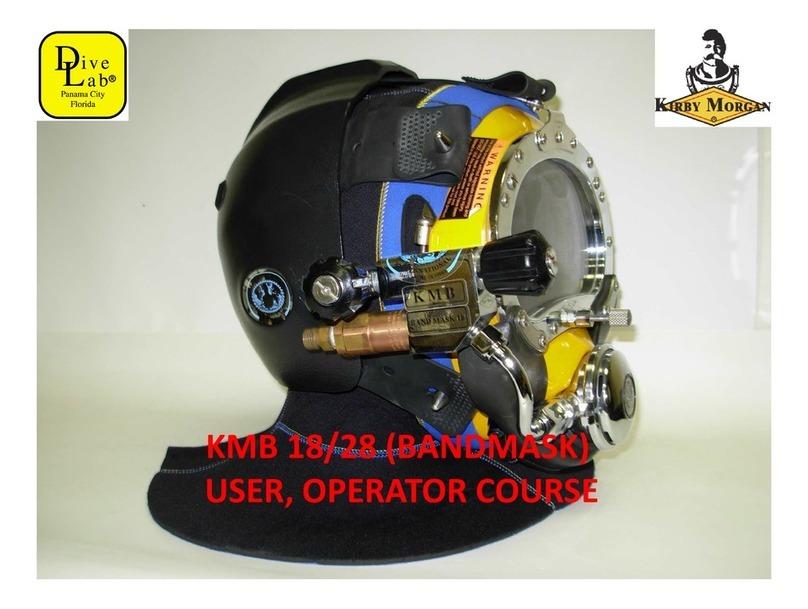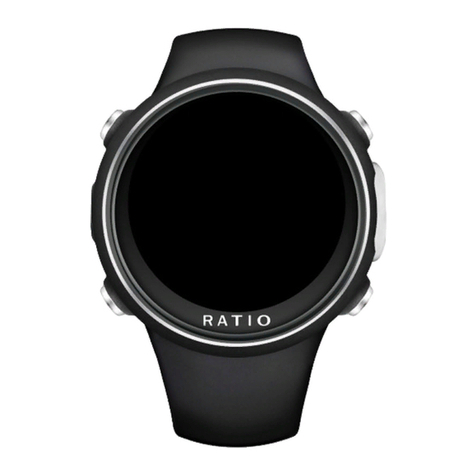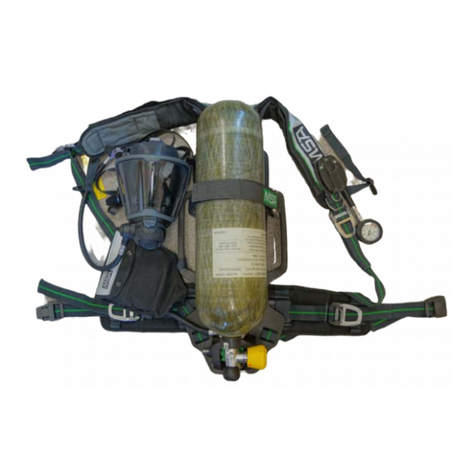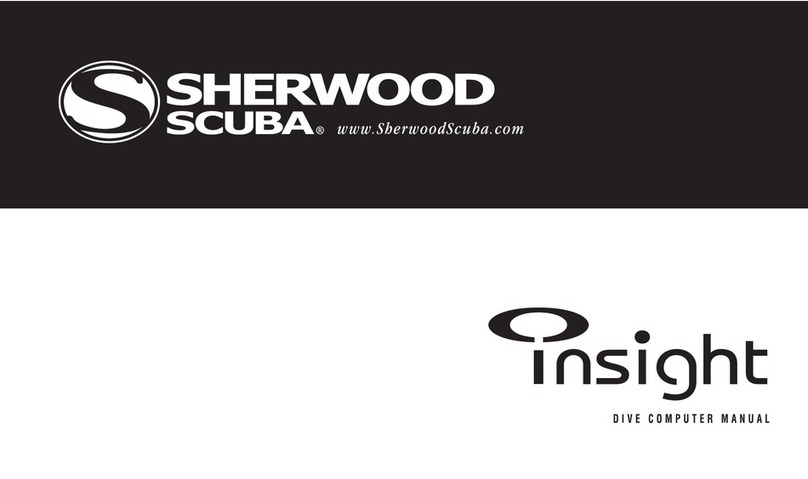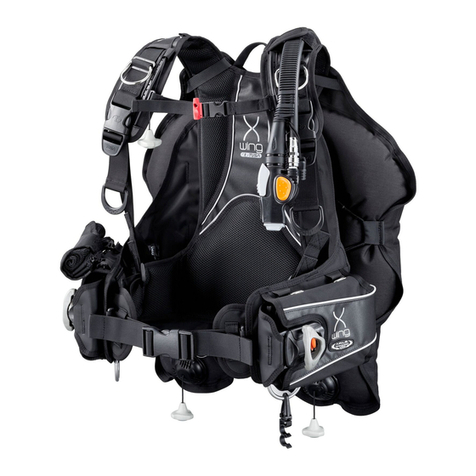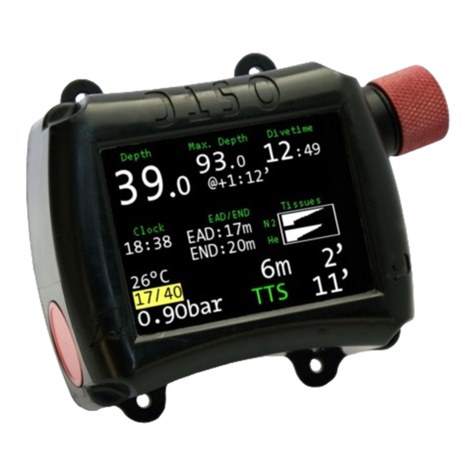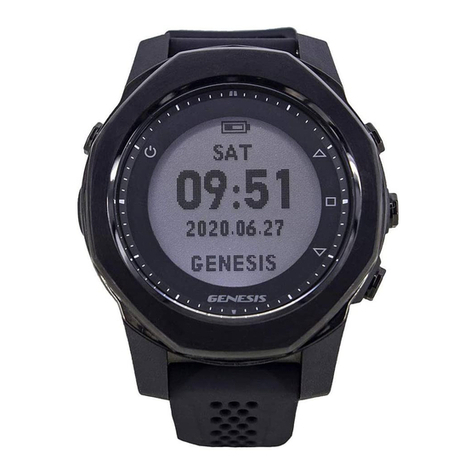Tank Pictogram
19 XX
MAX liters
5
General Information & Specifications
SCUBA Cylinder Selection and Configuration
The maximum single and double cylinder size specifications (in liters) for the
BC is found on a tank pictogram on the warning label. This label is found on
the BC, inside the vest. If the double cylinder pictogram has a "XX" in it, then
the BC has been designed for single cylinder use only. If the single and double
cylinder pictograms have numbers in them, then the BC has been designed for
either single or double cylinder use. The number in the pictogram indicates the
largest cylinder size recommended, in liters.
Cylinder capacity is the volume of the SCUBA cylinder. When expressed in
cubic feet, the volume is given for compressed gas. When expressed in liters,
the volume is given for the actual volume of the cylinder based on the interior
dimensions of the cylinder. Zeagle Systems, Inc. maximum recommended
cylinder capacity is 19 liters (120 ft3). Once again, if you have a question,
consult your local authorized Zeagle Dealer.
Failure to comply with the following information may result in an improper
buoyancy configuration. You must maintain neutral buoyancy while diving
to prevent injury or death.
Your buoyancy depends on the combination of all your diving equipment added
to your own buoyancy. The Zeagle System is designed to work with a variety
of tank sizes and configurations.
Cylinder dimensions and capacity are two quantities
which are important to understand when configuring your
equipment. Cylinder dimensions are the actual, outside
dimensions of a SCUBA cylinder (also called the tank).
Zeagle BC's are designed specifically for SCUBA cylin-
ders which have a maximum diameter of 20.3 cm (8 in)
and maximum height of 78.7 cm (31 in). Consult your
local authorized Zeagle Dealer if you have any questions
regarding cylinder dimensions.
